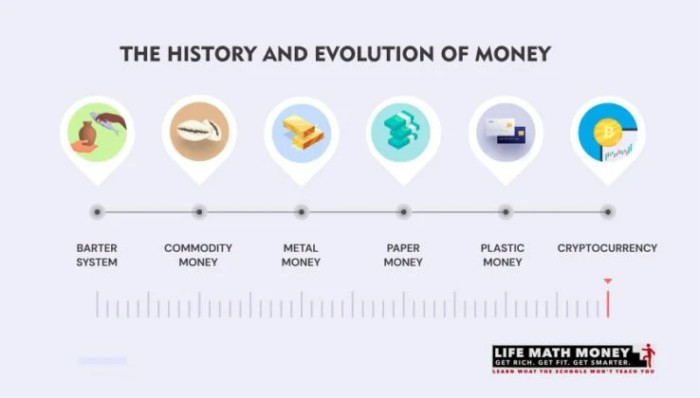Ever wondered how a shiny coin or a crumpled bill could hold the power to shape civilizations? It’s a question that’s been buzzing around since the dawn of time, and it’s one that we’re about to dive headfirst into. From the ancient bartering systems to the rise of digital currencies, money has been the driving force behind some of the biggest events in history, influencing everything from empires to revolutions.
It’s a story of power, progress, and the relentless human desire to trade, exchange, and ultimately, thrive.
Get ready to rewind the clock and explore the fascinating evolution of money, its impact on world events, and how it continues to shape our lives today. This journey will take us through the rise and fall of empires, the birth of global trade, and the ever-changing landscape of finance.
We’ll uncover the stories behind iconic currencies, explore the cultural significance of money, and even delve into the world of books that have shed light on this complex and ever-evolving phenomenon.
The Evolution of Money
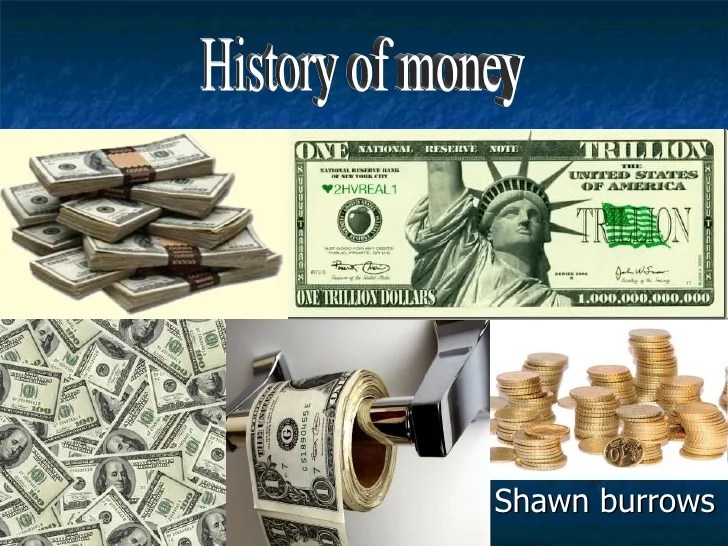
Money, the lifeblood of our global economy, has evolved dramatically over centuries, shaping the course of human history. From its humble beginnings as simple bartering to the sophisticated digital currencies of today, the journey of money is a fascinating tale of innovation, adaptation, and societal progress.
The Dawn of Barter
Barter, the direct exchange of goods and services without the use of money, was the earliest form of economic transaction. Imagine a world where you traded your surplus crops for a handcrafted tool or your hunting skills for a warm blanket.
This system, while simple, was inefficient and limited. The value of goods was subjective and finding a willing trading partner with compatible needs was a challenge.
The Rise of Coinage
The invention of coinage marked a significant turning point in the evolution of money. The earliest known coins, minted in Lydia (modern-day Turkey) around 600 BC, were made of electrum, a naturally occurring alloy of gold and silver. Coinage offered several advantages over barter:
- Standardized Value:Coins represented a fixed unit of value, eliminating the need for haggling and subjective assessments.
- Portability and Durability:Coins were easily transportable and durable, making them convenient for trade and commerce.
- Divisibility:Coins could be easily divided into smaller units, facilitating transactions of various values.
The Roman Denarius
The Roman denarius, a silver coin introduced in the 3rd century BC, became the dominant currency of the Roman Empire. Its widespread use facilitated trade and economic growth throughout the vast Roman territories. The denarius featured the image of Roman deities and emperors, symbolizing the power and authority of the Roman state.
The Chinese Paper Money
While the West relied on coins, China pioneered the use of paper money in the 7th century AD. The Tang Dynasty, facing a shortage of copper coins, introduced paper notes as a convenient alternative. These early paper money, known as “flying money,” were backed by the government and represented a claim on a specific amount of copper coins.
This innovative system revolutionized trade and finance in China.
Early European Banking Systems
The rise of banking in Europe during the Middle Ages further transformed the landscape of money. Medieval merchants and traders, facing the risks and inconveniences of transporting large sums of gold and silver, turned to banks for safekeeping and credit.
These early banks provided essential financial services, such as deposit accounts, loans, and money exchange.
The Technological Revolution
The 20th century witnessed a technological revolution that had a profound impact on money. The invention of the credit card in the 1950s revolutionized consumer spending and facilitated global trade. Electronic banking, ATMs, and online payment systems further streamlined financial transactions, making money more accessible and convenient than ever before.
The Rise of Digital Currencies and Cryptocurrencies
In the 21st century, the world is embracing a new era of digital currencies and cryptocurrencies. These digital forms of money, often based on blockchain technology, offer decentralized and secure alternatives to traditional fiat currencies. Bitcoin, the first cryptocurrency, emerged in 2009, sparking a wave of innovation and excitement in the financial world.
While still in their infancy, digital currencies have the potential to reshape global finance and challenge the traditional banking system.
Money’s Influence on History
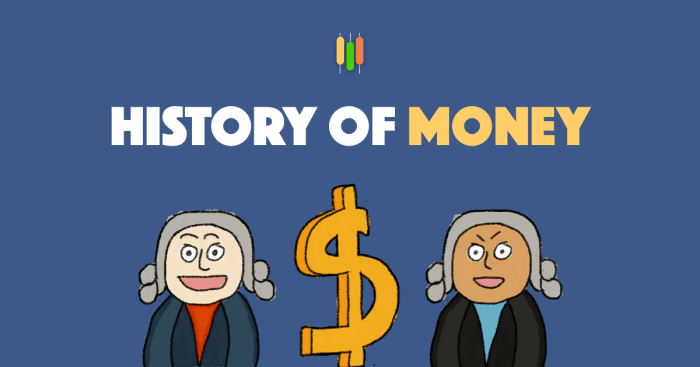
Money has been a driving force throughout human history, shaping civilizations, sparking conflicts, and influencing the course of events. From the rise and fall of empires to the development of modern economies, money has played a pivotal role in shaping the world we know today.
Money and Empires
Money has been a crucial factor in the rise and fall of empires throughout history. The ability to amass wealth through trade, taxation, and resource control has been a defining characteristic of powerful empires. For example, the Roman Empire’s vast wealth, accumulated through trade and conquest, allowed it to maintain a powerful military and build an extensive infrastructure, contributing to its long-lasting influence.
Conversely, the decline of empires often coincided with economic instability, such as the decline of the Roman Empire due to inflation and economic mismanagement.
Money and Wars
Money has always been a significant factor in warfare, fueling the development of armies, weapons, and logistical support. From the ancient world to modern times, wars have been financed through various means, including taxation, borrowing, and plunder. The ability to raise and sustain a powerful military has often been a determining factor in the outcome of conflicts.
For instance, the American Revolution was financed through loans from France and other European powers, enabling the colonies to defeat the British Empire.
Money and Revolutions
Money has also played a significant role in revolutions, both as a cause and a consequence. Economic inequality and social injustice often drive revolutionary movements, as people seek to challenge existing power structures and redistribute wealth. For example, the French Revolution was sparked by economic hardship and social inequality, fueled by the discontent of the lower classes.
After the revolution, the new government implemented economic reforms aimed at addressing the grievances that had sparked the uprising.
You know how they say money talks? Well, “When Money Meets History How Money and History Shaped Our World” is like a whole-ass conversation about how dough has been the backbone of civilization since the dawn of time. From bartering beads to trading stocks, we’ve been chasing that green for centuries.
But if you’re looking for some serious hustle tips to get that bank roll popping, check out Billion+Dollar Baby The Blueprint 5 Shocking Secrets To Stay Home & Strike It R.I.C.H. It’s like a crash course in making it big in the modern world, and honestly, it’s kind of fascinating to see how the past informs our present-day money moves.
Money and Social Structures
Money has profoundly shaped social structures throughout history. The emergence of money as a medium of exchange led to the development of specialized labor, creating new social classes and hierarchies. For example, the rise of trade and commerce in ancient civilizations led to the emergence of merchants and artisans, who became distinct social groups with their own economic interests.
Money also played a role in the development of slavery, as it enabled the purchase and sale of human beings as commodities.
Money and Economic Development
Money has been a catalyst for economic development throughout history. The availability of capital has allowed for investment in infrastructure, technology, and innovation, leading to economic growth and prosperity. For example, the Industrial Revolution was fueled by the availability of capital from wealthy investors, who financed the development of new technologies and factories.
Yo, think about it, money’s been around forever, right? From ancient coins to modern-day crypto, it’s shaped our world, from the way we trade to the rise and fall of civilizations. And hey, if you’re feeling inspired by history, why not get creative?
Check out The XXL How To Draw Book for Beginners & Pros Countless Drawings to Sketch incl. Step-by-Step Instructions & Techniques with 3 Difficulty Levels for Adults Adolescents & Kids to unleash your inner artist. You could even draw some sweet ancient coins or historical figures, connecting money and history in a totally rad way.
It’s all about finding those connections, you know?
Money and Technological Progress
Money has also played a significant role in technological progress. The development of new technologies often requires significant investment, which is often provided by individuals, governments, or corporations. For example, the development of the internet was driven by government funding and private investment, leading to a revolution in communication and information access.
Yo, wanna know how dough and history are like, totally intertwined? Like, how the Benjamins shaped the world we know? It’s a wild ride, man. Download And Listen Here to get the lowdown on this crazy journey from the ancient times to today.
Money, history, it’s all connected, dude.
Timeline of Money’s Influence on History
- Ancient Times:The emergence of money as a medium of exchange in Mesopotamia and Egypt facilitated trade and the development of complex economies.
- Renaissance:The rise of banking and credit during the Renaissance enabled the financing of artistic and intellectual endeavors, contributing to the cultural and economic flourishing of the period.
- Industrial Revolution:The availability of capital from investors fueled the development of new technologies and industries, leading to unprecedented economic growth and social change.
- Modern Era:The rise of global finance and the development of new financial instruments, such as stocks and bonds, have shaped the modern economy and influenced global trade and investment.
Money and Culture
Money isn’t just about buying things; it’s deeply woven into the fabric of human culture. It shapes our values, beliefs, and how we interact with the world. From the art we create to the social structures we build, money leaves its mark on every aspect of our lives.
Money’s Influence on Art and Cultural Expression
Money has a significant impact on the way art is created, consumed, and valued. It influences which artists gain recognition, the types of art that are produced, and the ways in which art is exhibited and collected.
- Patronage:Historically, wealthy individuals and institutions have played a crucial role in supporting artists. From Renaissance patrons like the Medici family to modern-day art collectors, financial backing has allowed artists to pursue their creative visions and create masterpieces that have shaped the course of art history.
Think about how the Roman Empire built its power – money, duh! It’s like that epic quest for the throne in the Queen of Battle series, but instead of swords, it’s coins. Money’s been the backbone of empires, revolutions, and even your favorite reality show’s drama.
It’s the ultimate story of how we got here, and it’s a whole lot more interesting than your average history textbook.
For example, the Medici family’s patronage of artists like Leonardo da Vinci and Michelangelo helped to fuel the artistic brilliance of the Renaissance era.
- Market Forces:In contemporary art, the market plays a significant role in determining the value of artworks. The prices of paintings, sculptures, and other forms of art can fluctuate based on demand, scarcity, and the reputation of the artist. This market dynamic can create incentives for artists to produce works that are commercially appealing, sometimes at the expense of artistic integrity.
For instance, the astronomical prices achieved by some contemporary artists like Jeff Koons and Damien Hirst have sparked debates about the role of money in the art world.
- Accessibility:Money can also influence the accessibility of art to different segments of society. Museums and galleries often charge admission fees, limiting access for those with limited financial resources. Moreover, the high cost of art collecting can create a barrier to entry for individuals who want to engage with art beyond simply viewing it in public spaces.
This disparity in access can perpetuate social inequalities and limit cultural engagement for certain groups.
Money and Social Hierarchies
Money has historically been a powerful tool for shaping social hierarchies and class structures. It creates divisions between those who have wealth and those who do not, and these divisions can manifest in various ways, from access to education and healthcare to social status and political influence.
- Class Distinctions:Throughout history, money has been a key determinant of social class. Wealthy individuals and families have often enjoyed greater privileges and opportunities than those with limited financial resources. This disparity in wealth can lead to inequalities in access to education, healthcare, housing, and other essential resources.
For example, in many societies, the wealthy have access to private schools, exclusive healthcare facilities, and luxurious living accommodations, while those with limited financial means may struggle to meet basic needs.
- Political Power:Money can also influence political power and decision-making. Wealthy individuals and corporations often have significant influence on government policies and legislation. They can contribute heavily to political campaigns, lobby for favorable laws, and exert pressure on elected officials.
This influence can give them an advantage over ordinary citizens and can undermine democratic principles of equality and representation.
- Consumerism:In modern consumer societies, money plays a central role in shaping our identities and social status. We are constantly bombarded with messages that equate material possessions with happiness and success. This consumerist culture encourages us to spend money on goods and services that we may not truly need, and it can lead to feelings of inadequacy and dissatisfaction if we are unable to keep up with the latest trends.
For example, the popularity of luxury brands and the pursuit of designer goods often reflect a desire to project an image of wealth and status.
Book Review
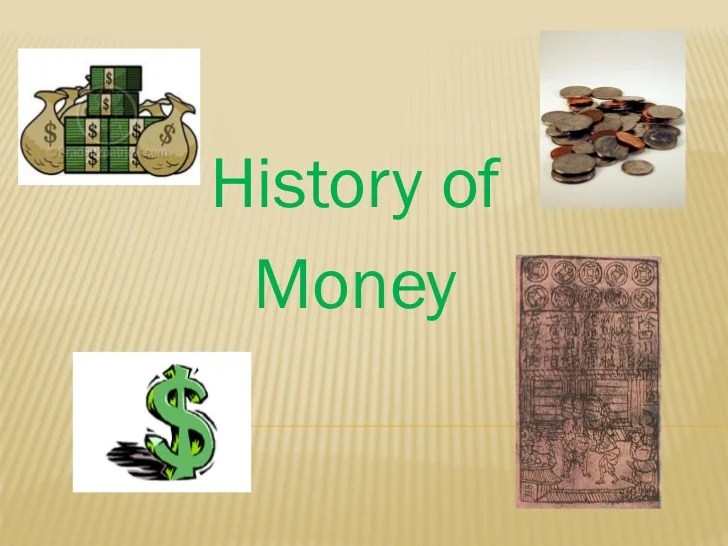
Diving into the intricate relationship between money and history, “Debt: The First 5,000 Years” by David Graeber offers a captivating and thought-provoking exploration of how debt has shaped civilizations, from ancient Mesopotamia to the modern world. This book is a must-read for anyone interested in understanding the complex and often-overlooked role of money in shaping our world.
Central Themes
Graeber’s central argument revolves around the idea that debt is not simply a financial transaction, but a fundamental social and political force that has shaped human societies for millennia. He argues that debt has been used to create hierarchies, enforce power structures, and control populations throughout history.
The book delves into various historical examples, demonstrating how debt has been used to enslave, exploit, and control people.
Strengths
One of the book’s greatest strengths lies in its comprehensive historical scope. Graeber meticulously traces the evolution of debt from its earliest forms in ancient Mesopotamia to the modern era, highlighting its various manifestations and impacts across different cultures and societies.
The book is also notable for its accessible writing style, making complex historical concepts understandable for a wide audience.
Weaknesses
While Graeber’s research is impressive, some critics argue that his analysis can be overly simplistic, particularly in its portrayal of the relationship between debt and power. Some argue that he overlooks the complex interplay of factors that contribute to debt and its consequences, focusing too heavily on the role of elites and institutions in perpetuating debt-based systems.
Key Arguments and Insights
| Argument | Insight |
|---|---|
| Debt is not a natural phenomenon but a social construct. | Debt is a tool that has been used throughout history to create and maintain power structures. |
| Debt is often used to control and exploit people. | Debt has been a mechanism for enslavement, colonization, and economic oppression. |
| Debt can be a powerful force for social change. | Debt forgiveness and debt relief have played a crucial role in challenging existing power structures and promoting social justice. |
Final Thoughts
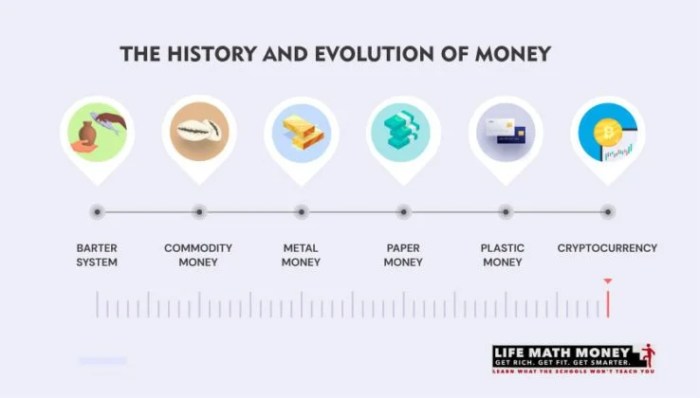
As we reach the end of this journey, one thing becomes crystal clear: money isn’t just about numbers or transactions. It’s a reflection of our values, our aspirations, and our shared human experience. From the ancient bartering systems to the rise of digital currencies, money has been a constant companion, a catalyst for change, and a powerful force that has shaped the course of history.
So, the next time you reach for your wallet, take a moment to appreciate the story behind the money you hold. It’s a story that’s been unfolding for centuries, and one that continues to write itself every single day.
FAQ Overview
What are some examples of how money has shaped social structures?
Money has played a significant role in creating social hierarchies and class structures throughout history. For example, the accumulation of wealth by certain groups, such as the nobility or merchant class, has often led to their dominance and influence over society.
This has resulted in unequal distribution of resources, power, and opportunities, shaping social relations and creating divisions between different social groups.
What are some examples of how money has influenced art and culture?
Money has influenced art and culture in various ways. Patrons, such as wealthy individuals or institutions, have funded artistic creations, shaping artistic styles and trends. The rise of commercial art and the commodification of art have also been influenced by money, leading to the creation of art for the market rather than purely for artistic expression.
Moreover, money has influenced the accessibility and consumption of art, making it available to a wider audience but also contributing to the commercialization of art.

